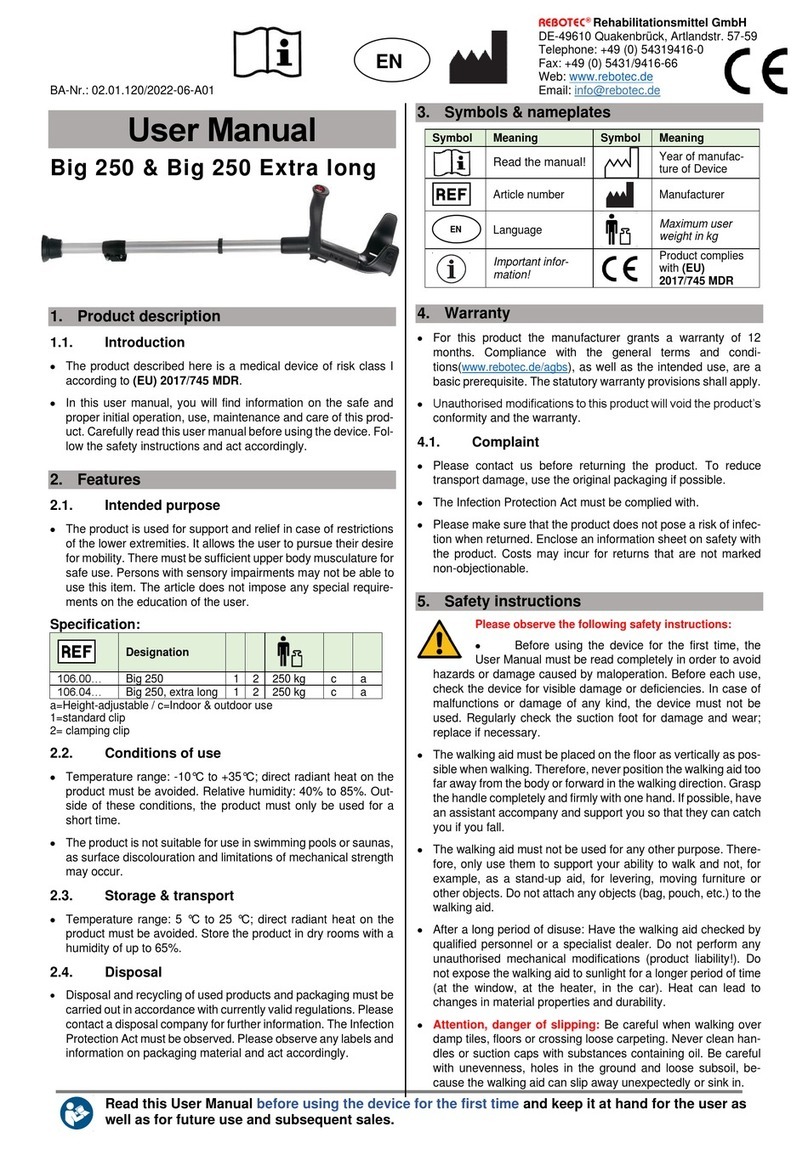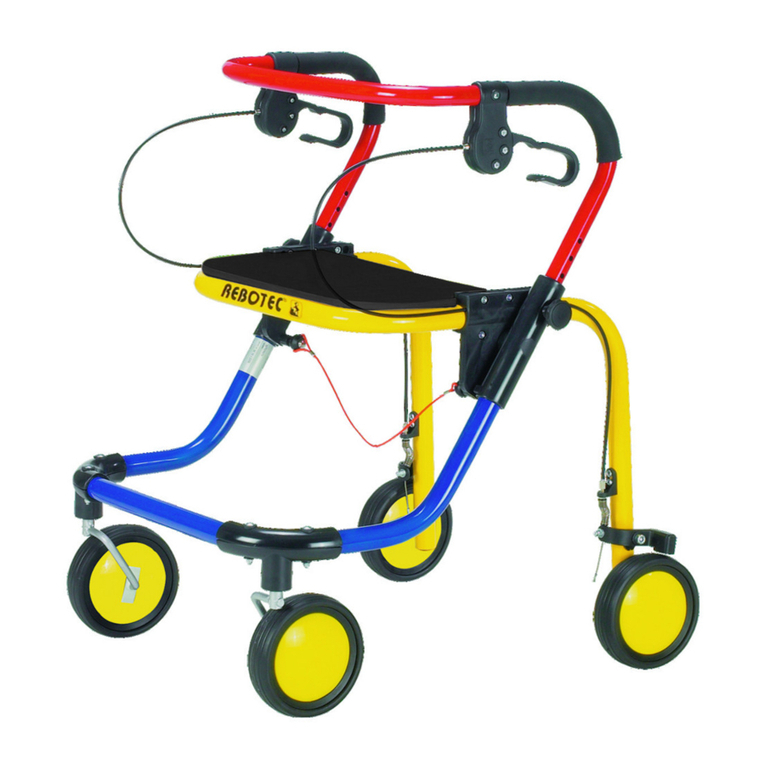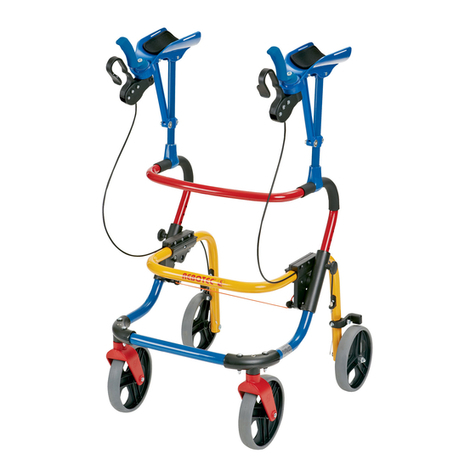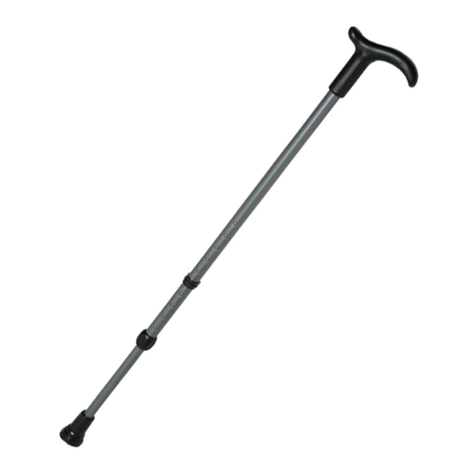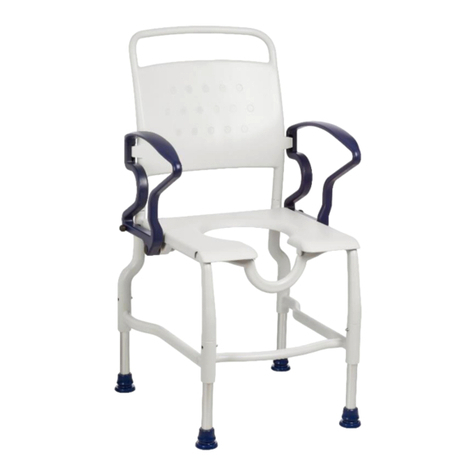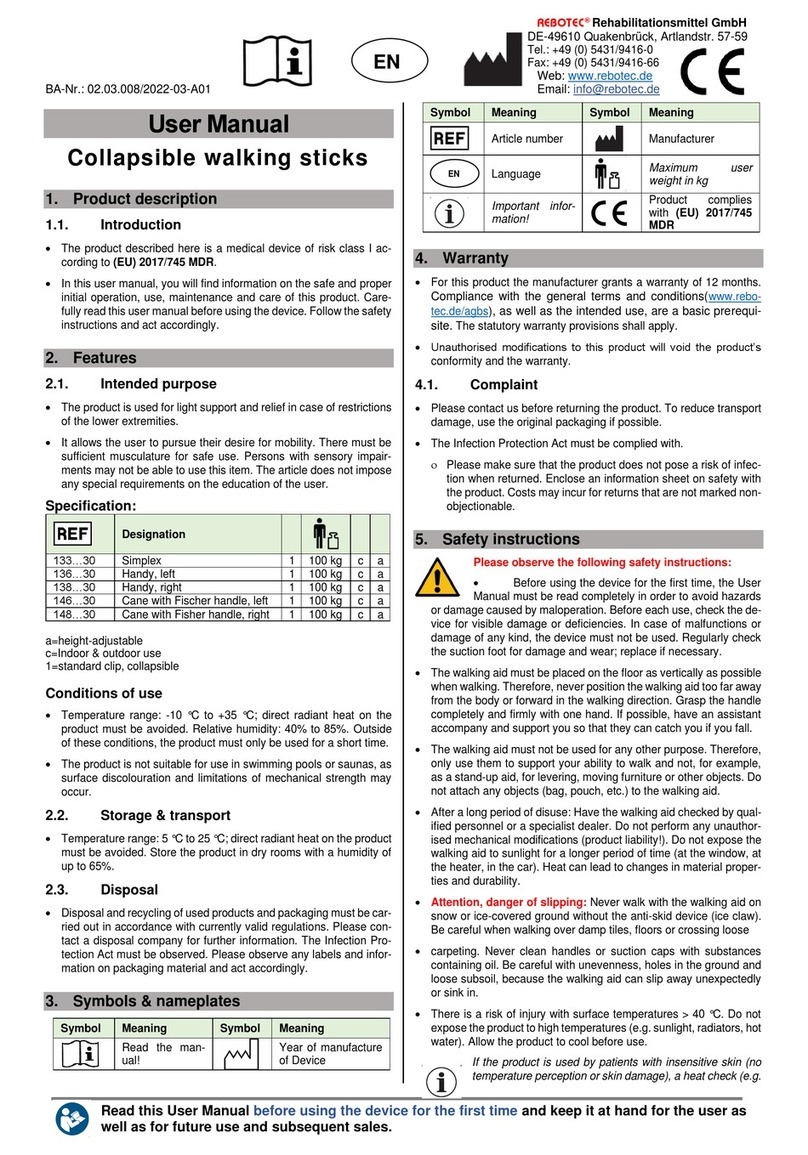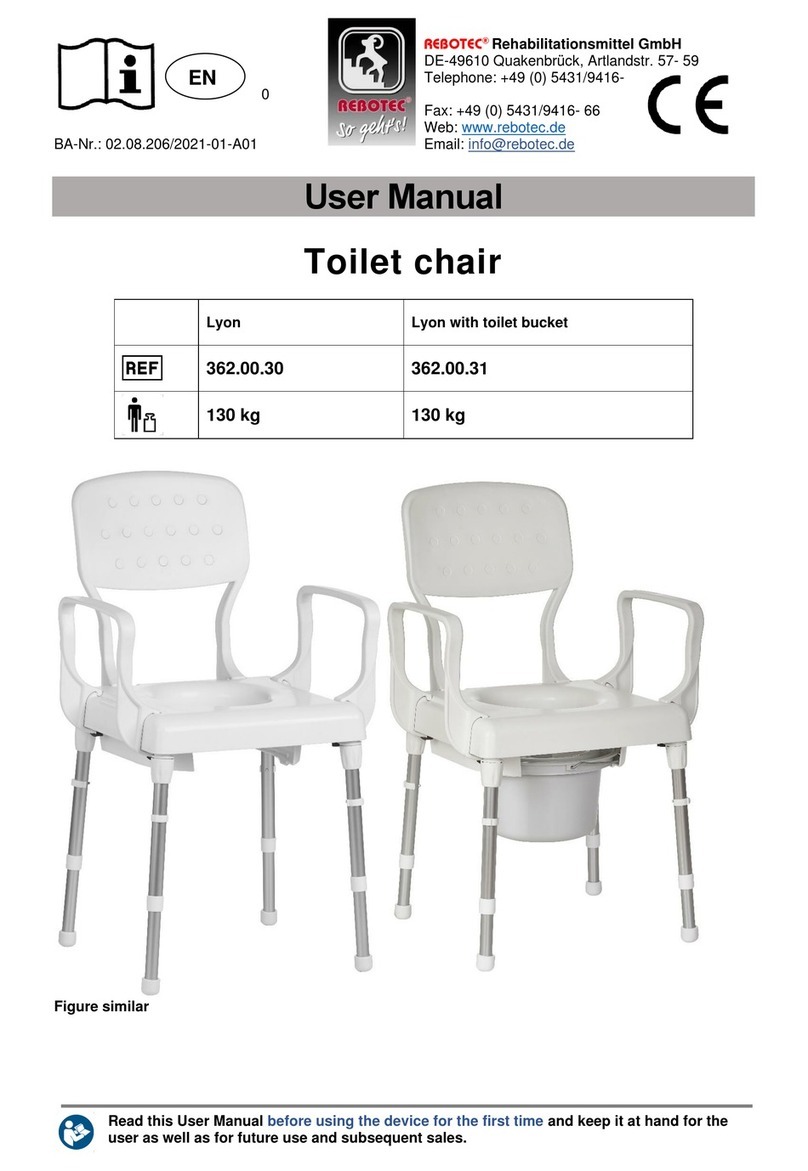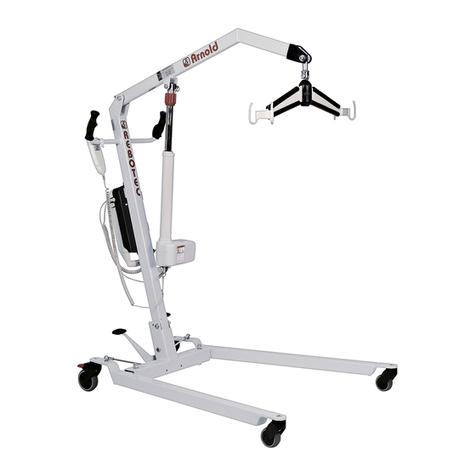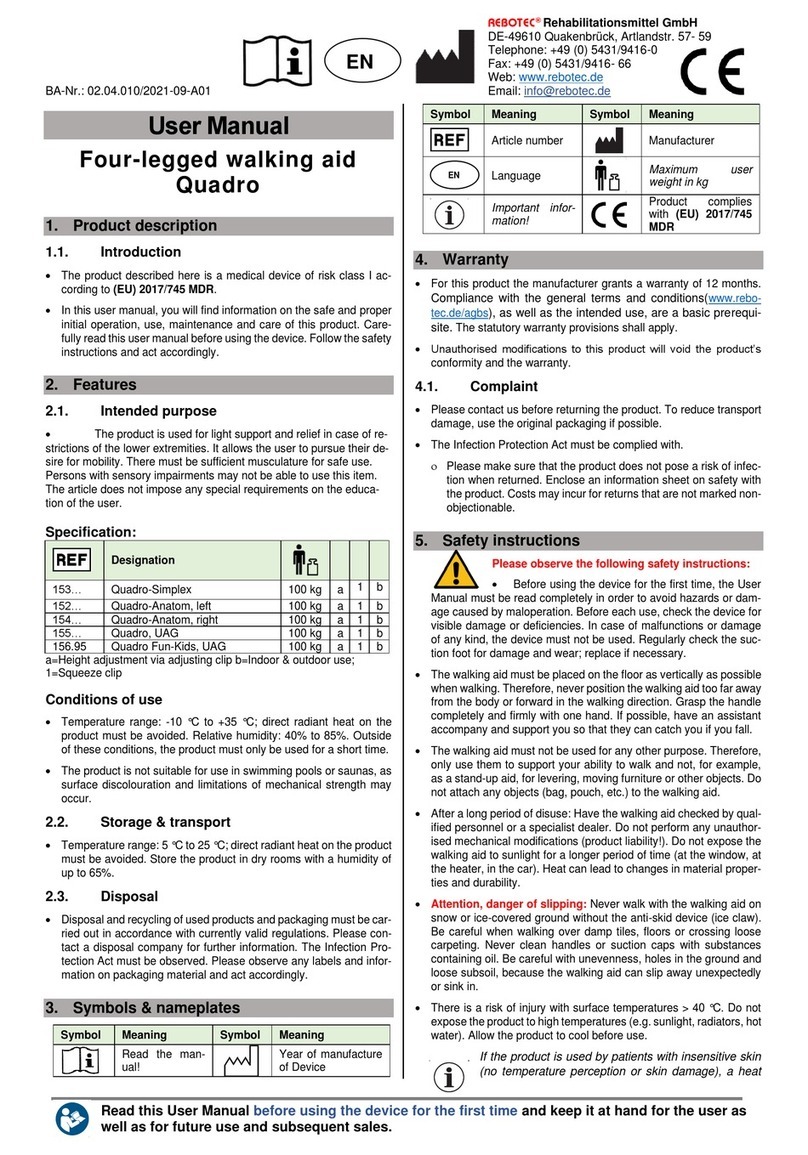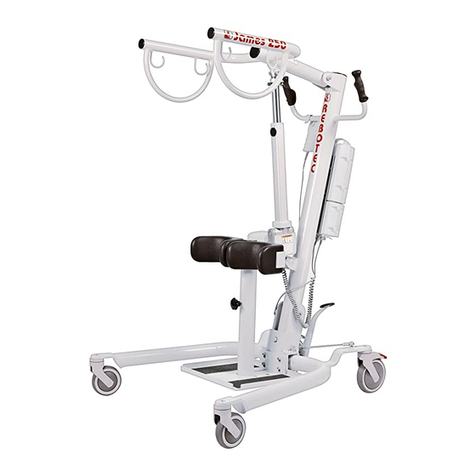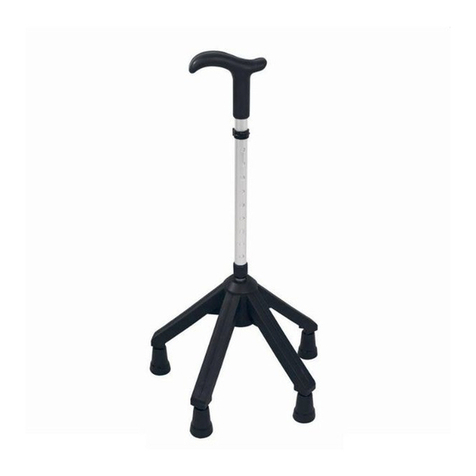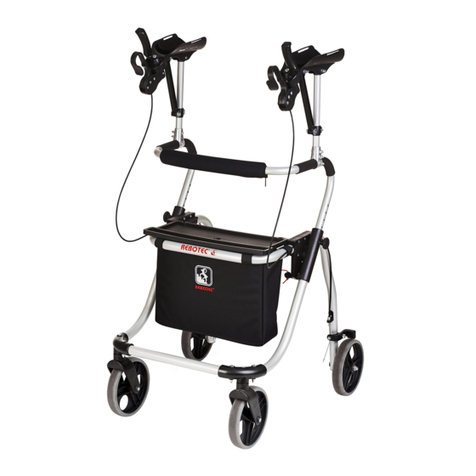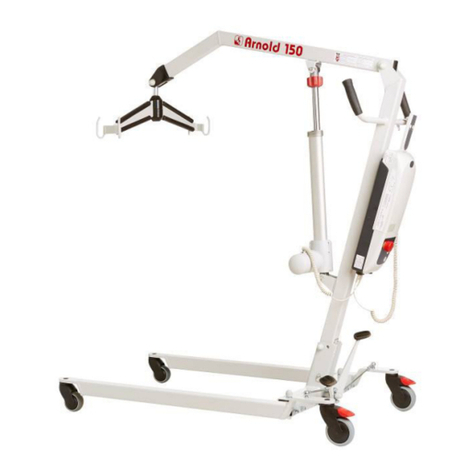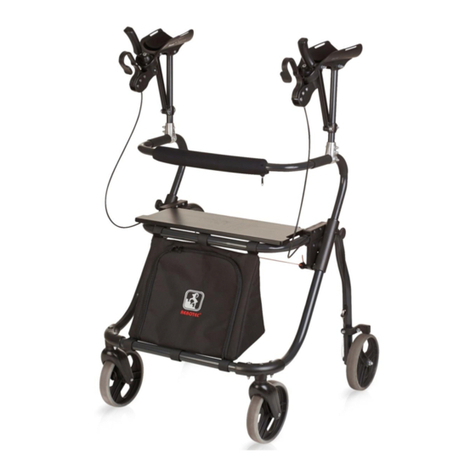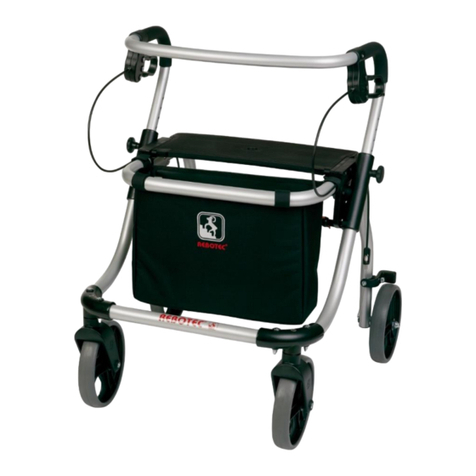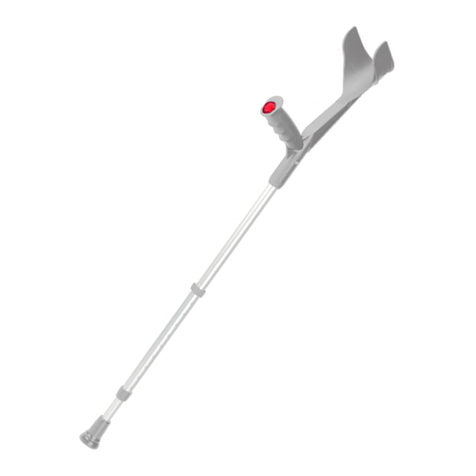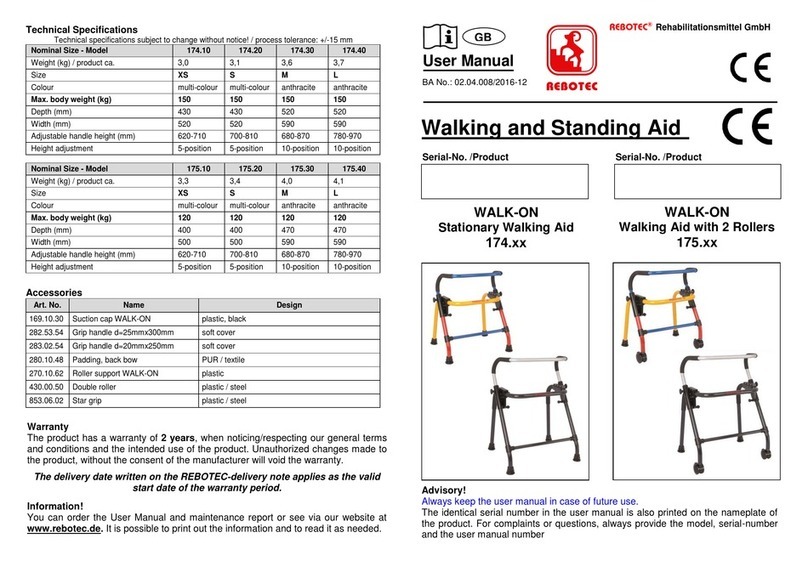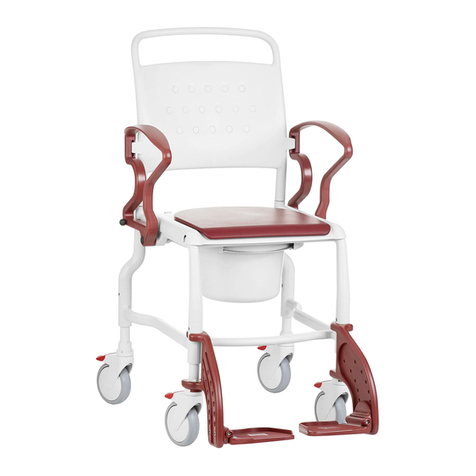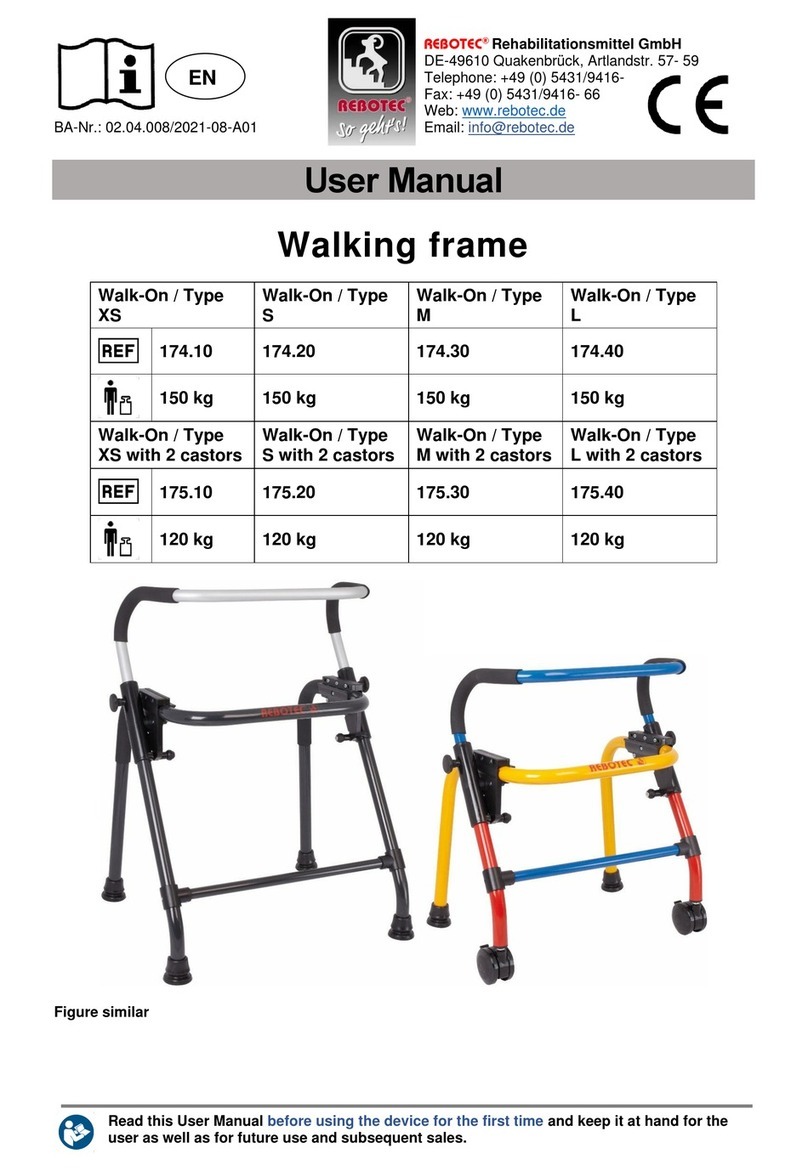
REBOTEC / BA No.: 02.09.045/2016-12 GB
- 4 -
5. Disposal
Disposal of the used product and its packaging
must be done separately according to the local and
national regulations. Please contact your local
disposal company or environmental officials for
further information.
6. Safety advisories during use
When using the Patient Hoist, the follow-
ing safety advisories must be observed:
Attention! Operating instructions!
Before the first use, the User Instructions must
be read completely in order to avoid faulty opera-
tion or hazards.
Before each use, check the Patient Hoist for
visible damage or deficiencies.
Operating and adjusting the Patient Hoist must
be done only by persons who are knowledgeable
and trained on how to properly handle the Pa-
tient Hoist. This requires the ability to use the
unit with the patient.
Patient Hoists used in wet rooms may be ex-
posed to ozone moisture, chlorine and heat,
which can lead to oxidation that appears as a
white coating.
When functional faults or damage of any type
occur, then the Patient Hoist may not be used.
Danger of breakage!
The maximum allowable load of 150 kg may
not be exceeded because no safe operation
can be assured.
Whenever using a sling, be sure that it is secure-
ly hung to the carrier of the Patient Hoist. Do not
use any sling that shows signs of damage.
Do not place any objects between the main col-
umn and the drive axis. No perpendicular loads
may be applied to the drive axis.
The patient must not hold onto the drive axis.
No weight loads may be hung onto the carrier for
an extended time period.
Danger of injury!
The Patient Hoist may not be operated while it is
being charged up.
The Patient Hoist may be used only inside on
even, slip-free surfaces. Using the Patient Hoist
on slopes, grades or inclinations must be avoid-
ed due to the increased risk.
Use caution when travelling in tight spaces.
Paths used by the Patient Hoist must be cleared
before they are travelled on.
Sudden movements and pushing, as well as
patient-swinging must be avoided because of an
increased risk of an accident.
Never leave the patient unsupervised when us-
ing the Patient Hoist! An unforeseen movement
or action by the patient may lead to a possible
risk of injury.
In the event of an emergency lowering of the
patient, use extreme caution to avoid putting the
patient in danger. In difficult situations, seek the
assistance of another person.
Check for a secure connection between the car-
rier and the lifter arm.
Danger! Function hazard!
It must be assured that no moisture reaches
inside the electrical systems. (Observe protec-
tion class!)
Do not open up the control / drive / battery unit or
hand switch systems!
Do not charge up the rechargeable battery in wet
rooms (e.g. bathrooms, shower stalls.
In the event the electric jamming protection does
not function (drive must not run when there is
blocking), then the Patient Hoist must not be
used.
Watch out for possible electromagnetic disturb-
ances from unit(s) such as mobile phones, medi-
cal equipment!
7. Product specifications
7.1 Delivery scope
The product has been carefully inspected in the
factory for freedom of defects and for complete-
ness. After having received it, carefully check over
the product for possible transport damages and for
completeness.
1 Patient Hoist: Arnold 150 (frame)
1 control unit, rechargeable battery
and manual switch
1 charging unit for the rechargeable battery
Optional instruction(s) and scale
7.2. Technical specifications
We reserve the right to make technical developments
and improvements with respect to the design shown
in this User Instructions booklet.
43 kg / 45kg (w/o accessories)
Standing: 110/70/200 (210) cm)
Front: d=75 mm; back d=100mm
from 55/ (40) to 174/ (182) cm
approx. 50 hoist cycles (de-
pends on load and battery
charge)
Stepless, free of jerking
1 min operation / 9 min pause
Type A: 230V / 28V,
0.5 A, 50 Hz
Type M: 100-240V / 32
V / 0.8-0,4 A / 50-60 Hz
